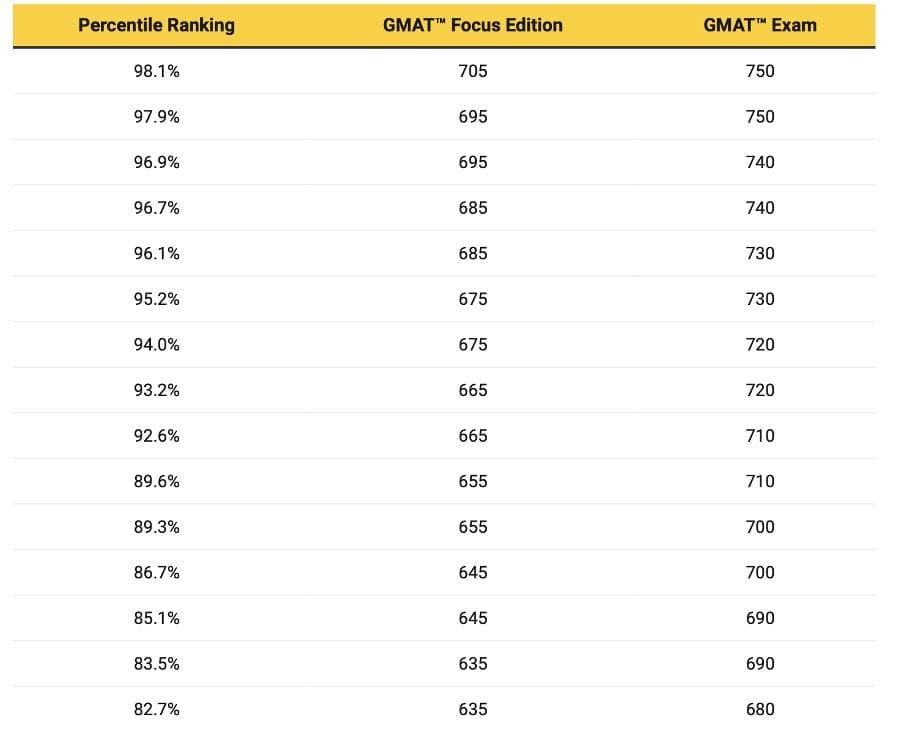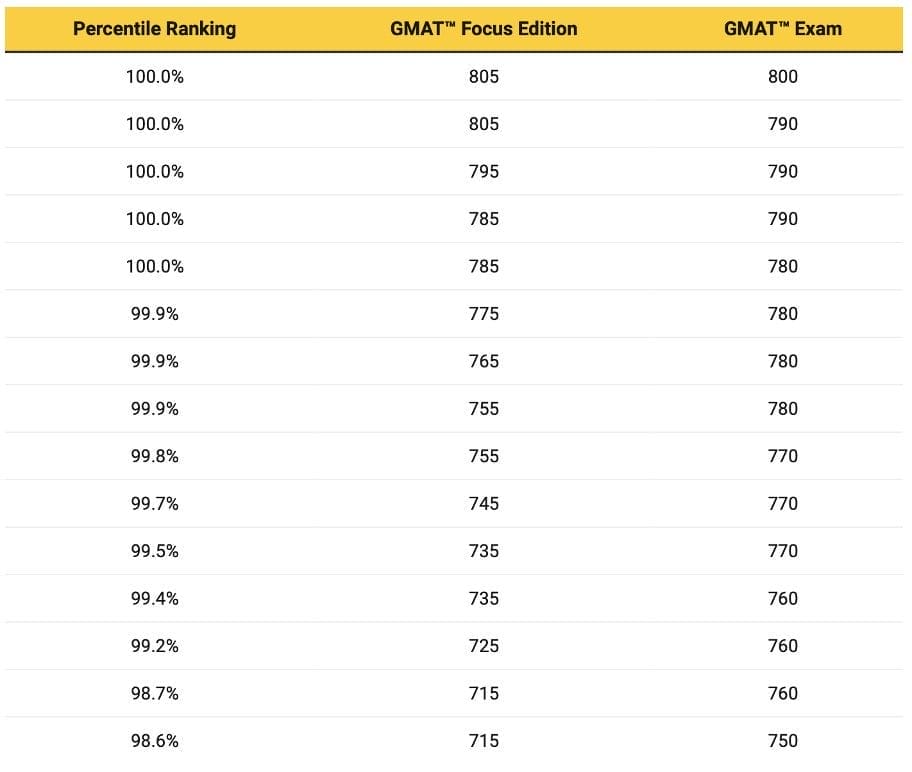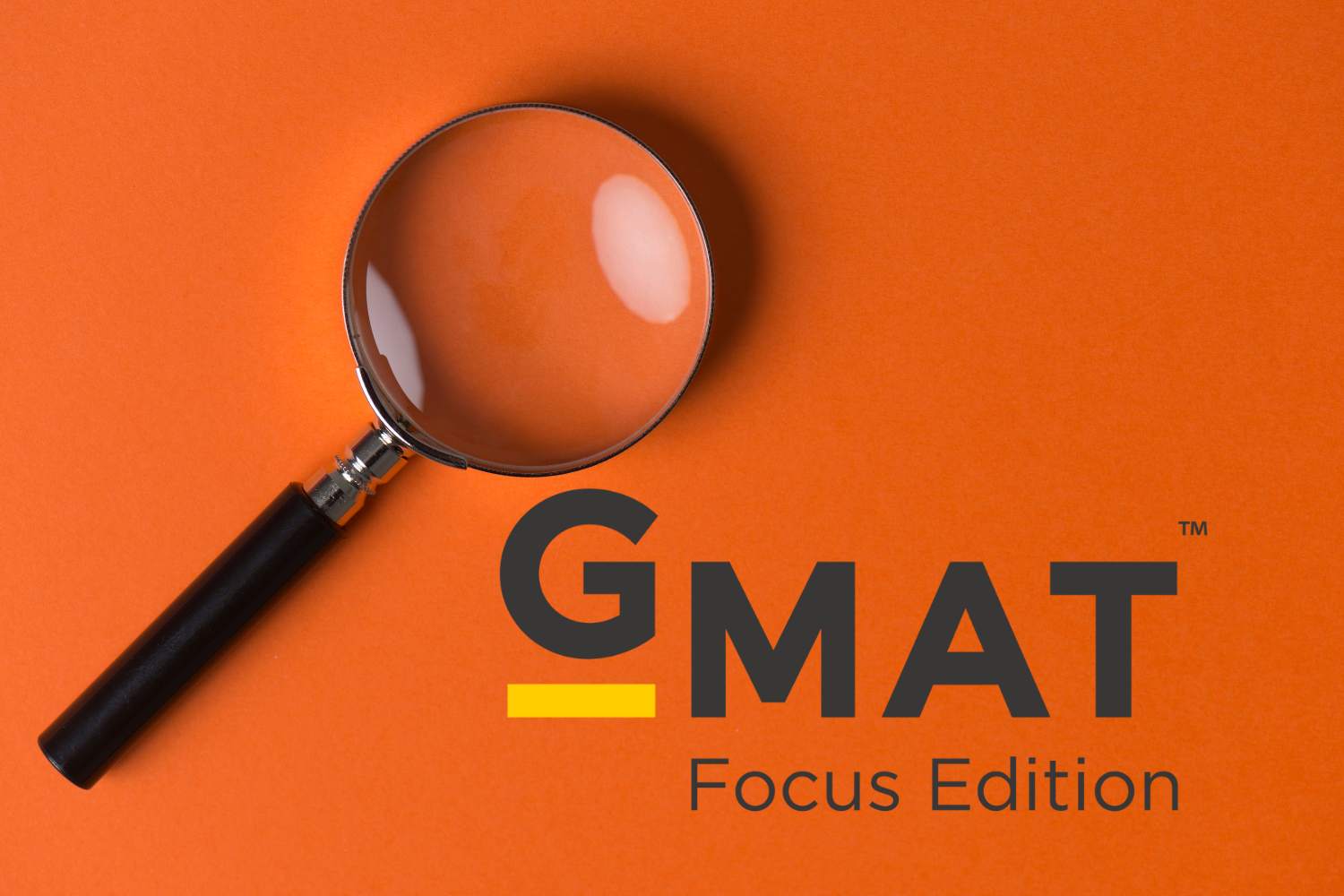As we transition from the “classic” GMAT to the GMAT Focus, there’s bound to be confusion about the score differences since the two tests are scored on slightly different scales! Below we discuss the differences and some takeaways.
GMAT Focus is on a New Scale
The first thing to realize is that the GMAT Focus is on a 205 to 805 scale instead of the old 200 to 800 scale of the classic GMAT. Additionally, although scores still descend by 10 point increments, scores on the GMAT Focus land on the “5’s” instead of “0’s” of the classic GMAT: scores go from 805 to 795 to 785 and so on, instead of 800 to 790 to 780. This change was undoubtedly done to make sure that business schools would know what type of score they are looking at and not be confused about which test the applicant took.
GMAT and GMAT Focus Concordance: The Scores are Not Equal!
The above would not be that big a deal if you could just look at a GMAT Focus score of 705 and assume that it’s about equivalent to a 700 or 710 on the classic GMAT. Unfortunately, you cannot because the scores are “off-set” at most places on the scoring spectrum. See below for a snippet of the current chart at mba.com. To see the full concordance table, go to GMAC’s Understanding Your Score page.

As you can see from the above, in the score range that most people are aiming for in hoping to gain acceptance to the top MBA programs (roughly 680 to 750 on the classic GMAT), the GMAT Focus scores differ significantly. 705 is the new 750 and 655 is the new 700. A helpful heuristic that you can use is that the GMAT Focus scores are about 50 points lower than equivalent classic GMAT scores, especially in the score range that most top test-takers are scoring. However, that difference breaks down at higher and significantly lower scores as explained below.
GMAT Focus Allows for Greater Differentiation Among Top Scorers
If you look at the snippet below for the concordance at the top end of the scoring spectrum, you will notice that for every classic GMAT score, there are more GMAT Focus score equivalents.

A 780 score on the classic GMAT, for example, can correspond to scores of 755, 765, 775, or 785 on the GMAT Focus. This is important! What it means is that the new GMAT Focus exam will be able to differentiate test takers more at the top end of the scoring spectrum. Not all 780 test takers are really equal, and the GMAT Focus will do a better job of separating them. Obviously, this doesn’t matter much at that score level, but there is slightly greater differentiation at lower scores as well.
Score Conversion for the GMAT Quantitative, Verbal, and Data Insights Sections
Less important than the overall score but still of significance is that the subsection scores have also shifted from a scale of 6 to 51 on the classic GMAT (technically the range was 0 to 60, but for statistical reasons test-takers could not score below 6 or above 51) to a 60 to 90 range on the GMAT Focus. As of this writing, mba.com does not have a concordance from the classic GMAT to the GMAT Focus, but one can figure out the equivalent scores by looking at the percentiles. But the good folks at GMAT Club have created a score conversion chart for the Quant and Verbal sections, so you can look there!
A Final Word of Warning: Not All Schools Are Accepting the GMAT Focus for 2024 Admission
Before you rush off to take the GMAT Focus, be forewarned that not all business schools are accepting the new version of the GMAT for students looking to start b-school in 2024. As of the time of this writing, several schools have stated that they will NOT be accepting the GMAT Focus for R1 or R2 applicants (though some WILL be accepting the GMAT Focus for applicants applying in 2024, including the later deadlines, such as R3). Harvard and Wharton are among the schools NOT accepting the GMAT Focus for R1 and R2 of the 2023-2024 admission cycle. You should check directly with schools since policies may change, but a current list of schools and their policies can be found here.

